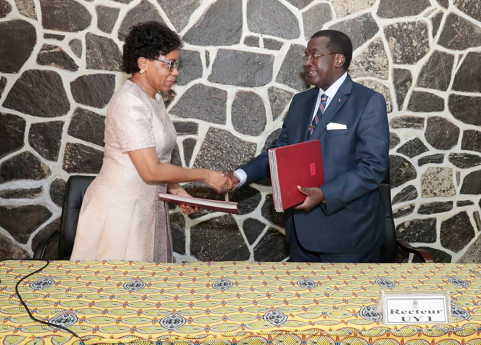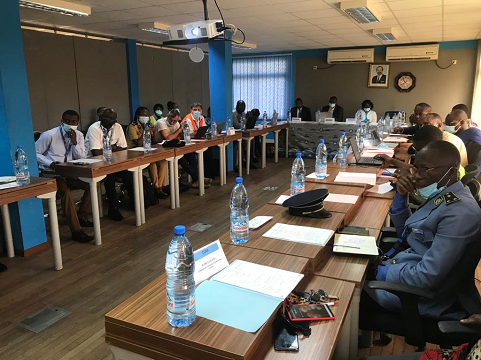Strengthening the aeronautical culture at the CCAA
Published: Friday, 01 July 2022 15:42
The company’s staff was sensitized on the notion and importance of a flight plan at its internal technical knowledge sharing forum "AERIAL Tuesdays" on June 28, 2022.

The purpose of the speakers account at this weekly exercise was to present, fundamental, summarized, information on the composition of a flight plan and its importance to flight safety.
To start with, a flight plan is defined as all specified information about a proposed flight or part of a flight, transmitted to air traffic services organizations. It is established by the pilot or his representative and is full of vital information for flight safety. It indicates among other information: the identity and characteristics of the aircraft, the departure and destination aerodromes, the planned route, the estimated duration of the trip, the alternate airports in case of bad weather, the type of flight (instrument flight rules (IFR) or visual flight rules (VFR)), information about the pilot, the number of people on board and information on the aircraft.
Also, Law 2013/010 of July 24, 2013 on the civil aviation regime requires in its article 58, paragraph 3 that "Any aircraft taking off from a Cameroonian aerodrome must file a flight plan approved by the competent air navigation services in advance." Based on this information, specialists (Air Traffic Controller and Search and Rescue Officers) provide the pilot with information which is relevant to the safe and effective conduct of flight and assistance in the event of distress. The filing deadlines are provided for by Order 708/MINT of June 8, 2006 on air rules to comply with in order to properly benefit from air traffic services in Cameroon. As a result, the air traffic controller will be able to give instructions and provide useful information to the pilot for the safe conduct of his flight, in order to avoid collisions. And the search and rescue agents could be deployed to conduct rescue operations in the event of distress of the aircraft.
In the Cameroonian context air traffic services are provided by ASECNA at the international airports of Douala, Yaoundé, and Garoua and by the Cameroon Civil Aviation Authority (CCAA) at other airports.
It should also be noted that the pilot can be assisted in the establishment of the flight plan by a flight dispatcher. The latter can be in charge of analyzing the air navigation charts and all meteorological information. More so, the flight dispatcher is also responsible for taking weight and balance estimates of the aircraft in compliance with the requirements before the aircraft takes off.
Meanwhile, the next session of "AERIAL Tuesdays" will focus on Aeronautical Information Publication (AIP).











